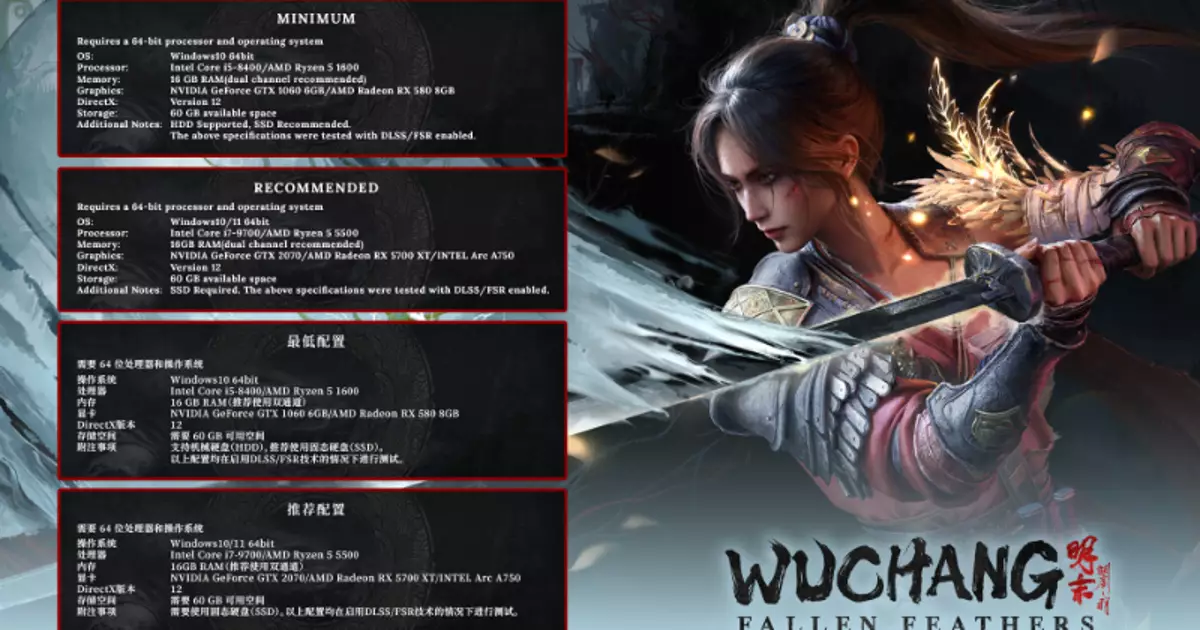Wuchang: Fallen Feathers promises more than just another medieval swordplay adventure; it aims to redefine the boundaries of genre-blending and narrative immersion. Set during China’s Ming dynasty, this game transports players into a richly textured world plagued by a bizarre feathered affliction. Unlike typical action RPGs that rely solely on flashy combat, Wuchang presents an intricate tapestry of story, choice, and atmospheric design that challenges players to think critically about morality, memory, and identity. It asks a provocative question: in a world overtaken by monstrous plagues, what does it truly mean to be human?
What sets Wuchang apart is its ambitious storytelling paired with nuanced gameplay mechanics. At its core, the game is about unraveling mysteries—both personal and societal. Players embody Wuchang, a amnesiac pirate swordswoman caught between the shadows of her fractured past and the chaotic present. The game’s narrative choices influence multiple endings, emphasizing player agency and the weight of decisions made in the crucible of survival. This approach elevates Wuchang from being mere mindless slashing to an emotionally compelling experience where every fight, every dialogue, and every secret uncovered carries significance.
Visuals and Atmosphere—An Evolved Artistic Vision
Since its early announcement, Wuchang has sparked comparisons to Bloodborne, primarily because of its dark, gothic ambiance and grotesque monster designs. However, recent updates suggest that its visuals have matured, moving away from the initial blood-red Yharnam-like aesthetic towards a more refined and less overwhelming palette. Developers Leenzee seem intent on creating a world that is haunting yet beautiful—an environment where the sinister beauty of Shu whispers beneath the surface of chaos and decay.
The game’s art direction cleverly balances traditional Chinese motifs with unsettling horror elements. Environments evoke a sense of broken grandeur, where snow-covered temples and lush wilderness hide lurking monsters afflicted by the Feathering disease. This disease, which grants victims feathers but strips them of their humanity, becomes a visual motif signifying the fragile line between civilization and monstrosity. The result is a landscape that is as emotionally charged as it is visually captivating. The detailed design encourages players to explore, not just for treasures, but for understanding the cultural and mythic layers that underpin the game’s world.
Core Gameplay and System Requirements—A Test of Hardware and Skill
Wuchang’s system requirements highlight its accessibility to a broad spectrum of players, while still promising a visually immersive experience for those with more powerful rigs. The minimum specs are modest; an Intel Core i5-8400 or AMD Ryzen 5 1600, alongside a GTX 1060 or RX 580, will suffice. The emphasis on a 16GB RAM setup and a 60GB SSD, however, signals the game’s demanding visual fidelity—players aiming for smoother performance should prioritize an SSD.
The game’s recommended specs push into high territory with an RTX 2070 or equivalent, enabling technologies like DLSS 4—Deep Learning Super Sampling—that significantly improve performance without sacrificing visual clarity. If there’s a silver lining, it’s the game’s scalability; even gamers with mid-tier machines can enjoy Wuchang, albeit with adjustments. From a technical perspective, the requirements are fair given the game’s detailed world and complex animations, but ambitious players should gear up accordingly.
The Gameplay Promise—Choices, Combat, and Mythic Musings
Beyond graphics and hardware, Wuchang’s gameplay promises a dynamic combat system intertwined with a compelling narrative. The use of “Red Mercury” to unlock new techniques and upgrade weapons introduces a layer of resource management and strategic thinking. The game’s boss fights are expected to be challenging, demanding mastery of timing and skill—echoes of FromSoftware’s influence are evident, yet Wuchang aims to carve out its own identity within the genre.
What’s truly enticing is the game’s moral ambiguity. Players’ decisions—who to trust, secrets to reveal, paths to pursue—directly influence the story’s outcome. This branching narrative structure suggests a replayability factor that can keep players engaged long after the first playthrough. It’s not just about hacking through hordes of enemies but about forging a narrative that reflects personal choices and moral complexity.
The thematic core—dealing with plagues, identity, and the monstrous transformation—resonates with current global fears yet is rooted in mythic storytelling. Wuchang appears to be poised as a cerebral, visceral experience that rewards curiosity, patience, and a willingness to confront uncomfortable truths.
Certainly, Wuchang presents itself as more than just another action game; it’s an ambitious fusion of cultural history, horror, and interactive storytelling. It dares players to question what lies beneath the feathers of civilization and to explore the depths of what it means to fight—not just monsters, but the shadows within ourselves.

